
The Majestic Monte Rosa: Italy's Alpine Jewel
Discover Monte Rosa, Italy's majestic alpine wonderland, perfect for skiing, hiking, and immersing in rich cultural and culinary experiences.
Monte Rosa, the second highest peak in the Alps, is a breathtaking destination for mountain lovers and adventure seekers. Located on the border between Italy and Switzerland, its snow-capped peaks and glaciers create a stunning backdrop for a variety of activities, from skiing and snowboarding to hiking and mountaineering. The Italian side of Monte Rosa, particularly the Aosta Valley and the Piedmont region, offers unique experiences that are sure to captivate any visitor. For skiers, the Monterosa Ski area is a paradise, with extensive trails that cater to both beginners and experts. In the summer, the region transforms into a hiker's dream, with well-marked trails that lead through lush meadows, dense forests, and up to panoramic viewpoints that offer breathtaking vistas of the surrounding peaks. The picturesque villages of Champoluc, Gressoney, and Alagna Valsesia provide charming bases for exploring the mountain, each offering a mix of traditional Alpine culture and modern amenities. History enthusiasts will find much to appreciate in the region's ancient castles, churches, and fortresses, which tell stories of a rich and varied past. Local cuisine is another highlight, with hearty dishes that reflect the area's agricultural heritage and alpine environment. Don't miss the opportunity to try local specialties such as fontina cheese, polenta, and valdostana dishes, which are sure to delight your taste buds.
Local tips in Monte Rosa
- Visit during off-peak seasons for a more peaceful experience and lower prices.
- Pack layers, as mountain weather can change rapidly.
- Consider hiring a local guide for challenging hikes or off-piste skiing.
- Try the local fontina cheese and other regional delicacies.
- Book accommodation in advance, especially during peak ski season.
- Explore the local villages for a glimpse of traditional Alpine life.
- Use public transport or shared shuttles to reduce your environmental footprint.
The Majestic Monte Rosa: Italy's Alpine Jewel
Monte Rosa, the second highest peak in the Alps, is a breathtaking destination for mountain lovers and adventure seekers. Located on the border between Italy and Switzerland, its snow-capped peaks and glaciers create a stunning backdrop for a variety of activities, from skiing and snowboarding to hiking and mountaineering. The Italian side of Monte Rosa, particularly the Aosta Valley and the Piedmont region, offers unique experiences that are sure to captivate any visitor. For skiers, the Monterosa Ski area is a paradise, with extensive trails that cater to both beginners and experts. In the summer, the region transforms into a hiker's dream, with well-marked trails that lead through lush meadows, dense forests, and up to panoramic viewpoints that offer breathtaking vistas of the surrounding peaks. The picturesque villages of Champoluc, Gressoney, and Alagna Valsesia provide charming bases for exploring the mountain, each offering a mix of traditional Alpine culture and modern amenities. History enthusiasts will find much to appreciate in the region's ancient castles, churches, and fortresses, which tell stories of a rich and varied past. Local cuisine is another highlight, with hearty dishes that reflect the area's agricultural heritage and alpine environment. Don't miss the opportunity to try local specialties such as fontina cheese, polenta, and valdostana dishes, which are sure to delight your taste buds.
When is the best time to go to Monte Rosa?
Unmissable attractions to see
Circus Maximus
Discover the grandeur of Circus Maximus, Rome's iconic ancient stadium, where chariot races once captivated thousands. A must-visit for history enthusiasts.

Basilica of Saint Francis of Assisi
Discover the enchanting Basilica of Saint Francis of Assisi, a UNESCO World Heritage site rich in history, spirituality, and stunning art.

Giardino degli Aranci
Explore the enchanting Giardino degli Aranci, a tranquil garden in Rome offering stunning views, fragrant orange trees, and a peaceful escape from the city's hustle.

Rocca Calascio
Experience the breathtaking views and rich history of Rocca Calascio, a majestic medieval castle in the heart of Italy's Abruzzo region.
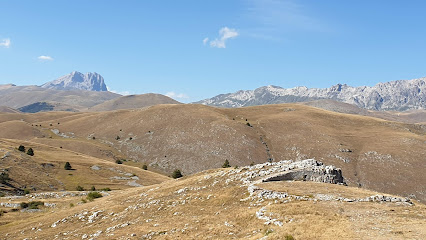
Fondazione Prada
Discover the innovative world of contemporary art at Fondazione Prada, Milan's premier art center, blending history with modern creativity.

Giardini la Mortella
Explore the enchanting Giardini la Mortella in Forio, a botanical garden filled with exotic plants, serene landscapes, and cultural events.

Castel Savoia
Explore the enchanting Castel Savoia in Aosta Valley, a stunning castle surrounded by breathtaking Alpine scenery and rich royal history.

Peck
Discover the culinary excellence of Peck in Milan, where gourmet Italian delicacies meet a rich gastronomic tradition.
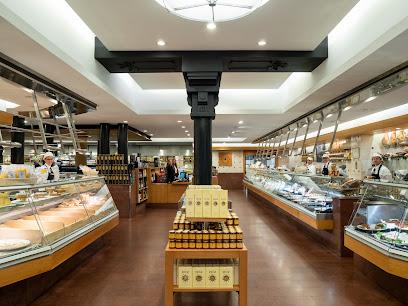
Rocca Maggiore
Explore the historical splendor of Rocca Maggiore, a medieval fortress offering breathtaking views and rich history in the heart of Assisi.
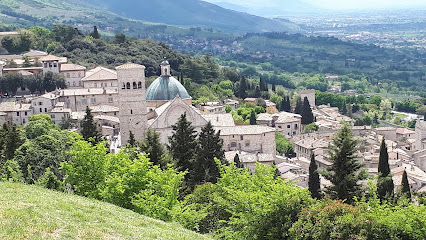
Parco del Colle Oppio
Experience the stunning views and serene atmosphere of Parco del Colle Oppio, a tranquil park in the heart of Rome offering a perfect escape.
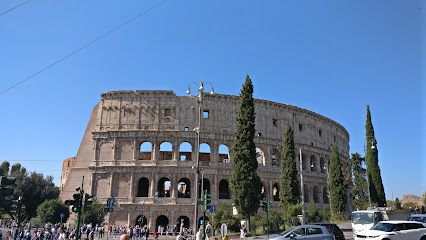
Abbazia di Monte Oliveto Maggiore
Experience the serene beauty and historical richness of Abbazia di Monte Oliveto Maggiore, a stunning Tuscan abbey surrounded by breathtaking landscapes.

Laghetto di San Benedetto
Experience the serene beauty of Laghetto di San Benedetto, a natural preserve in Subiaco, where tranquility meets stunning landscapes.

Caves of Pastena
Discover the breathtaking beauty of the Caves of Pastena, a natural wonder in Frosinone Province, Italy, showcasing stunning stalactite formations.

Monterosa Ski - Champoluc
Explore the breathtaking Monterosa Ski in Champoluc, a premier ski resort in the heart of the Italian Alps, offering adventure for all ages.
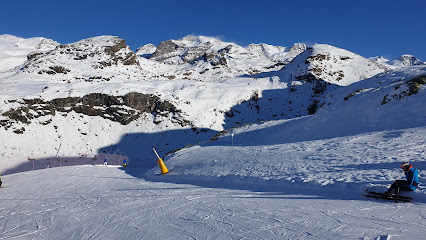
Bar Basso
Experience the heart of Milan's nightlife at Bar Basso, renowned for its innovative cocktails and vibrant atmosphere.

Essential places to dine
Verve Gusto Italiano
Discover authentic Italian cuisine at Verve Gusto Italiano in Busto Arsizio – where every dish tells a story.

Osteria della Pista
Discover Osteria della Pista in Casorate Sempione: A charming Italian restaurant offering authentic cuisine and warm hospitality.

Il Quinto Elemento
Experience authentic Italian cuisine at Il Quinto Elemento in Cardano Al Campo - home to exquisite pizzas and delightful flavors.

Trattoria del Ponte
Discover authentic Italian cuisine at Trattoria del Ponte in Gallarate, where every meal is a celebration of flavor and tradition.

Trattoria Monterosa
Experience authentic Italian cuisine at Trattoria Monterosa in Serravalle Sesia – where flavor meets tradition in every dish.

Il Terrazzo di Diana
Experience authentic Italian flavors at Il Terrazzo di Diana—where pizza meets fresh seafood in a charming setting.
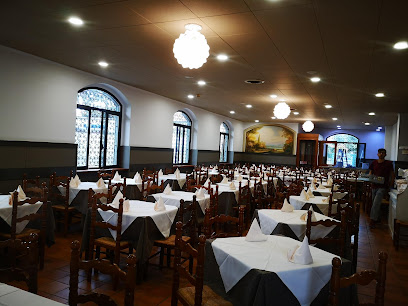
Il Kapuziner Platz im Wald
Experience authentic German cuisine paired with exquisite craft beers at Il Kapuziner Platz im Wald in Lonate Ceppino.

La Mimosa Ristorante
Discover La Mimosa Ristorante in Gallarate - your destination for authentic Italian cuisine featuring fresh seafood and gourmet pizzas.

Trattoria Posteria Torba
Discover authentic Italian cuisine at Trattoria Posteria Torba in Gornate Olona - where every dish tells a story.

Osteria Piccolo Stelvio
Discover authentic Italian cuisine at Osteria Piccolo Stelvio in Gornate Superiore - where every meal tells a story.

Bar Colle Betta
Discover the flavors of Italy at Bar Colle Betta in Gressoney-La-Trinité – where mountain views meet authentic cuisine.

Posteria San Rocco
Discover the exquisite flavors of Italy at Posteria San Rocco, a culinary haven in Gallarate offering authentic dishes and exceptional service.

Cascina del Lupo
Experience authentic Italian cuisine at Cascina del Lupo in Busto Arsizio - where every dish tells a story.

Menzaghi
Discover authentic Italian cuisine at Menzaghi in Fagnano Olona - where tradition meets taste in every dish.

Madre Nostra by CERVO
Experience authentic Northern Italian cuisine amidst stunning mountain views at Madre Nostra by CERVO in Zermatt.

Markets, malls and hidden boutiques
Il Centro
Discover Il Centro in Arese, Italy's largest shopping mall, featuring over 200 stores, diverse dining options, and a vibrant atmosphere for all visitors.

Designer Outlet Serravalle
Explore the luxurious Designer Outlet Serravalle with high-end brands, exciting sales, and delightful dining options for a perfect shopping experience.

Designer Outlet Castelromano McArthurGlen
Discover unbeatable deals on luxury brands and enjoy a fabulous shopping experience at Designer Outlet Castelromano near Rome.

CityLife Shopping District
Explore the CityLife Shopping District in Milan, where modern design meets a vibrant shopping experience with diverse brands and delightful dining options.

RINASCENTE Rome Via del Tritone
Discover the charm of Rinascente Rome, a premier shopping destination blending luxury fashion, gourmet dining, and stunning city views.

The Mall Firenze
Discover luxury shopping at The Mall Firenze, the ultimate outlet destination in the heart of Tuscany, offering exclusive brands at discounted prices.

Torri D'Europa
Discover an unparalleled shopping experience at Torri D'Europa, where fashion meets family fun in the heart of Trieste.

Globo Villa Rosa c.c. La Torre
Explore the vibrant shopping scene at Globo Villa Rosa with diverse offerings for every fashion enthusiast in Martinsicuro.

Babington's tea room
Experience the charm of Rome at Babington's Tea Room, where exquisite teas and delightful pastries create unforgettable memories.

Macugnaga - Monte Rosa
Experience the breathtaking beauty and rich culture of Macugnaga - Monte Rosa, an alpine paradise in the heart of the Italian Alps.

Rifugio Zamboni Zappa
Experience the charm of Rifugio Zamboni Zappa, a mountain cabin offering breathtaking views, delicious local cuisine, and hiking adventures in the Italian Alps.

Cremeria Monteforte
Discover the magic of artisanal gelato at Cremeria Monteforte, where every scoop is a taste of Italy's rich culinary tradition.

NaturaSì
Explore the vibrant world of organic products at NaturaSì in Grosseto, where health meets sustainability in every delicious bite.

La Valle di Vico | Agriturismo - Bed and Breakfast
Experience the charm of Italian countryside living at La Valle di Vico, a serene farmstay with cozy accommodations and local delights.

kitchen Alimentari italian food
Experience the authentic flavors of Italy at Kitchen Alimentari, where homemade pasta, gourmet groceries, and delightful chocolates await in Rome.

Essential bars & hidden hideouts
Ristorante Bar del Fico
Experience the essence of Rome at Ristorante Bar del Fico, where delicious Italian cuisine meets vibrant cocktails in a charming atmosphere.

Monterosa Ski - Staffal
Discover the enchanting Monterosa Ski - Staffal, a premier ski resort in the Aosta Valley, perfect for adventure seekers and families alike.

Salotto42
Experience the vibrant ambiance of Salotto42, a cocktail bar and brunch restaurant in the heart of Rome, blending exquisite drinks and delightful cuisine.

Wine Bar De' Penitenzieri
Experience the essence of Italian wine culture at Wine Bar De' Penitenzieri, where every sip tells a story of tradition and passion.

IL LOCALE
Discover Il Locale, a charming Italian bistro and wine bar in Rome, where authentic flavors and a vibrant atmosphere come together.

Pub Brasserie
Discover the vibrant flavors of Pub Brasserie in Champoluc, where American cuisine meets local charm in a warm and inviting atmosphere.

Ice Club Roma
Experience the chill of Ice Club Roma, where vibrant nightlife meets stunning ice artistry in the heart of the Eternal City.

The Basement - Pub. Cocktail Bar. Events
Experience the vibrant nightlife at The Basement, Rome's must-visit pub and cocktail bar, offering a diverse drink selection and lively events.
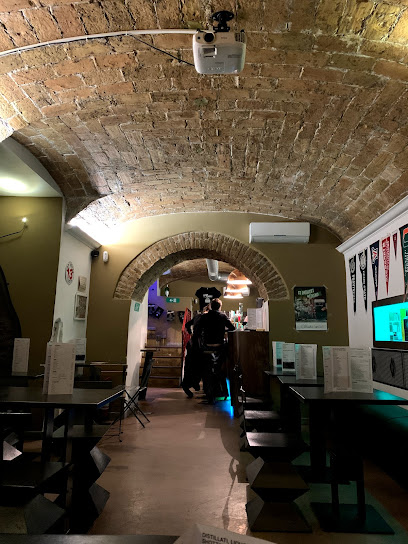
Malto Matto
Discover Malto Matto, Rome's premier beer hall, offering a wide selection of craft brews and delicious bites in a lively, friendly atmosphere.

Bar Ristorante Lago Gover
Experience the culinary delights at Bar Ristorante Lago Gover, where exquisite dishes meet breathtaking views in Gressoney-Saint-Jean.

Oyster Pub
Discover Oyster Pub in Rome, where fresh seafood meets classic pub fare in a vibrant and inviting atmosphere.

Rifugio Baita Belvedere
Experience breathtaking views and cozy comfort at Rifugio Baita Belvedere, a mountain retreat in the heart of Aosta Valley, Italy.

Da Mario
Experience local flavors and warm hospitality at Da Mario, a charming bar in Riva Valdobbia, Italy, perfect for unwinding after a day of exploration.
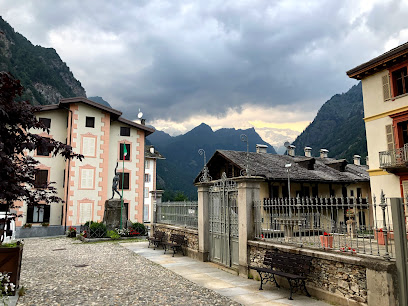
Totem Garden Bar
Discover the vibrant atmosphere of Totem Garden Bar in Rome, where relaxation meets local culture in a stunning garden setting.

du Soleil
Discover the heart of Aosta Valley at du Soleil, where mountain flavors meet cozy hospitality in a stunning alpine setting.
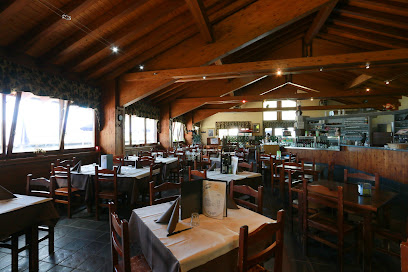
Local Phrases about Monte Rosa
-
- HelloCiao
[chow] - GoodbyeArrivederci
[ah-ree-veh-dehr-chee] - YesSì
[see] - NoNo
[no] - Please/You're welcomePer favore/Prego
[pair fa-voh-reh/preh-goh] - Thank youGrazie
[gra-tsyeh] - Excuse me/SorryScusi/Mi dispiace
[skoo-zee/mee dee-spyah-cheh] - How are you?Come stai?
[koh-meh stah-ee] - Fine. And you?Bene. E tu?
[beh-neh. eh too] - Do you speak English?Parli inglese?
[pahr-lee een-gleh-zeh] - I don't understandNon capisco
[non kah-pee-skoh]
- HelloCiao
-
- I'd like to see the menu, pleaseMi piacerebbe vedere il menu, per favore
[mee pyah-cheh-reh-beh veh-deh-reh eel meh-noo, pair fa-voh-reh] - I don't eat meatNon mangio carne
[non mahn-joh kahr-neh] - Cheers!Salute!
[sah-loo-teh] - I would like to pay, pleaseVorrei pagare, per favore
[vohr-reh-ee pah-gah-reh, pair fa-voh-reh]
- I'd like to see the menu, pleaseMi piacerebbe vedere il menu, per favore
-
- Help!Aiuto!
[ah-yoo-toh] - Go away!Vai via!
[vah-ee vyah] - Call the Police!Chiama la polizia!
[kyah-mah lah poh-lee-tsyah] - Call a doctor!Chiama un dottore!
[kyah-mah oon doh-toh-reh] - I'm lostMi sono perso
[mee soh-noh pehr-soh] - I'm illSto male
[stoh mah-leh]
- Help!Aiuto!
-
- I'd like to buy...Vorrei comprare...
[vohr-reh-ee com-prah-reh] - I'm just lookingSto solo guardando
[stoh soh-loh gwar-dahn-doh] - How much is it?Quanto costa?
[kwahn-toh koh-stah] - That's too expensiveÈ troppo caro
[eh troh-poh kah-roh] - Can you lower the price?Puoi abbassare il prezzo?
[pwah-ee ahb-bahs-sah-reh eel preh-tsoh]
- I'd like to buy...Vorrei comprare...
-
- What time is it?Che ora è?
[keh oh-rah eh] - It's one o'clockÈ l'una
[eh loo-nah] - Half past (10)Sono le dieci e mezza
[soh-noh leh dyeh-chee eh meh-tzah] - MorningMattina
[maht-tee-nah] - AfternoonPomeriggio
[poh-meh-ree-joh] - EveningSera
[seh-rah] - YesterdayIeri
[yeh-ree] - TodayOggi
[oh-jee] - TomorrowDomani
[doh-mah-nee] - 1Uno
[oo-noh] - 2Due
[doo-eh] - 3Tre
[treh] - 4Quattro
[kwah-troh] - 5Cinque
[cheen-kweh] - 6Sei
[say] - 7Sette
[seht-teh] - 8Otto
[awt-toh] - 9Nove
[noh-veh] - 10Dieci
[dyeh-chee]
- What time is it?Che ora è?
-
- Where's a/the...?Dov'è...?
[doh-veh] - What's the address?Qual è l'indirizzo?
[kwahl eh leen-dee-ree-tsoh] - Can you show me (on the map)?Puoi mostrarmi (sulla mappa)?
[pwah-ee mohs-trahr-mee soo-lah mahp-pah] - When's the next (bus)?Quando passa il prossimo (autobus)?
[kwahn-doh pahs-sah eel prohs-shee-moh ow-toh-boos] - A ticket (to ....)Un biglietto (per ....)
[oon beel-lyet-toh pair]
- Where's a/the...?Dov'è...?
History of Monte Rosa
-
Monte Rosa, the second highest peak in the Alps, has been home to humans since prehistoric times. Archaeological findings suggest that the first inhabitants were nomadic hunters and gatherers who roamed the valleys and slopes of this majestic mountain. The area later saw the rise of more settled communities, who utilized the rich natural resources available, including the fertile lower valleys for agriculture and the abundant wildlife for hunting.
-
The Romans were the first to establish a significant presence in the Monte Rosa region. They built roads and fortifications, enhancing trade and communication across the Alps. Evidence of Roman influence is still visible in the ancient ruins and artifacts scattered throughout the area. One of the most notable remnants is the Via delle Gallie, a Roman road that facilitated military and commercial activities between Italy and Gaul.
-
During the Middle Ages, the region around Monte Rosa witnessed the migration of the Walser people from the Valais in Switzerland. These German-speaking settlers established isolated communities high in the valleys, bringing with them unique architectural styles, customs, and agricultural practices. The Walser culture has had a lasting impact on the region, and their traditional wooden houses and dialects can still be seen and heard in the local villages.
-
The 19th century marked the beginning of the Golden Age of Alpinism, a period during which mountaineering became a popular pursuit among Europeans. Monte Rosa was one of the key destinations for climbers seeking to conquer its challenging peaks. In 1855, the first successful ascent of Monte Rosa's highest summit, Dufourspitze, was achieved by an expedition led by the British mountaineer Edward Whymper. This era of exploration and adventure significantly boosted the local economy and the development of mountain tourism.
-
During World War II, the Monte Rosa region played a significant role in the Italian resistance movement. The rugged terrain provided a natural refuge for partisans fighting against the Fascist regime and Nazi occupation. Numerous skirmishes and acts of sabotage took place in the valleys and forests surrounding Monte Rosa, and several memorials and museums in the area commemorate the bravery and sacrifices of the resistance fighters.
-
In the post-war era, Monte Rosa has developed into a premier destination for outdoor enthusiasts. Ski resorts, hiking trails, and mountaineering routes attract visitors from around the globe. Alongside tourism, there has been a growing emphasis on conservation, with numerous initiatives aimed at preserving the natural beauty and ecological integrity of the region. The Monte Rosa Massif is part of the European Natura 2000 network, which seeks to protect valuable and threatened habitats and species.
Monte Rosa Essentials
-
Monte Rosa is located in the Pennine Alps between Italy and Switzerland. The most convenient airport for accessing the Italian side is Milan Malpensa Airport (MXP), about 160 kilometers away. From Milan, you can take a train to the town of Vercelli or Novara and then transfer to a regional train to the towns of Alagna Valsesia or Gressoney, which serve as gateways to Monte Rosa. Alternatively, car rentals and shuttle services are available at the airport.
-
Public transportation in the Monte Rosa area is well-organized. There are regular bus services connecting the key towns like Alagna Valsesia, Gressoney, and Champoluc. Taxis are available but can be expensive for long distances. For ultimate flexibility and to explore remote areas, renting a car is recommended. During the winter season, ski lifts and cable cars are the primary modes of transport to the high-altitude areas of Monte Rosa.
-
The official currency in Italy is the Euro (EUR). Credit and debit cards are widely accepted in hotels, restaurants, and stores. However, it’s advisable to carry some cash, especially for small purchases or in remote areas where card payments might not be possible. ATMs are available in most towns, but it’s a good idea to withdraw enough cash before heading to more isolated locations.
-
Monte Rosa is generally a safe destination. However, tourists should take standard precautions such as avoiding isolated areas at night and keeping personal belongings secure. There are no specific high-crime areas targeting tourists, but it's always wise to stay vigilant. Be cautious of weather conditions, especially in the mountains, as they can change rapidly.
-
In case of emergency, dial 112 for immediate assistance. There are medical facilities and pharmacies in the main towns like Alagna Valsesia and Gressoney. It's essential to have travel insurance that covers medical emergencies, including mountain rescue if you're planning on hiking or skiing. For minor health issues, local pharmacies can provide over-the-counter medications.
-
Fashion: Do wear appropriate clothing for outdoor activities, and dress modestly when visiting religious sites. Avoid wearing overly casual or revealing clothing in town areas. Religion: Do respect local customs, especially in churches. Always remove hats and keep voices low. Public Transport: Do validate your ticket before boarding buses and trains. Don’t be loud or disruptive. Greetings: Do greet people with a friendly 'Buongiorno' or 'Buonasera.' A handshake is customary in formal settings. Eating & Drinking: Do try local dishes and wines. Don’t rush meals; dining is considered a leisurely activity.
-
To experience Monte Rosa like a local, visit during one of the traditional festivals such as the Fête des Guides in Gressoney. Take the time to explore local markets and sample regional cheeses and cured meats. Engage with locals, many of whom are passionate about their culture and history. For a unique experience, consider staying in a rifugio (mountain hut) and enjoy the stunning alpine scenery. Don’t miss the opportunity to hike the various trails, which offer breathtaking views and a chance to see wildlife.
Nearby Cities to Monte Rosa
-
Things To Do in Milan
-
Things To Do in Ascona
-
Things To Do in Locarno
-
Things To Do in Bergamo
-
Things To Do in Zermatt
-
Things To Do in Turin
-
Things To Do in St. Moritz
-
Things To Do in Grindelwald
-
Things To Do in Murren
-
Things To Do in Interlaken
-
Things To Do in Arosa
-
Things To Do in Genoa
-
Things To Do in Davos
-
Things To Do in Thun
-
Things To Do in Parma













